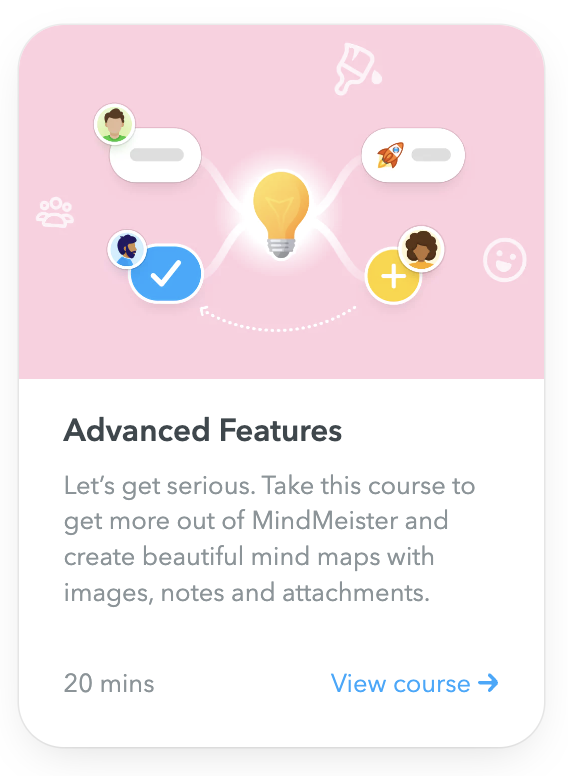🧠 Mapped by Meister: Quarterly Goals [Business]

Good afternoon, master minds 👋! Today, I'm going to share an insight into how we at Meister use MindMeister to plan our quarterly goals.
💡 Recognize this template? It's from @Nick Willemsens' webinar on quarterly goals! Watch it on demand here. 💡
This is the first of a four-part series in which we will explore how each of our tools can help you with quarterly goal planning. The final post will share some best practices for using our products in tandem. Want to improve your operational processes and collaboration? Keep reading!
Strategic company goals are critical to growth and operational improvement, regardless of the sector you work in. At Meister, quarterly goals are at our core: This ensures our internal processes, products and relationships with external stakeholders continually improve. In fact, it's one of the reasons we want to share our template with you 🤩.
Structure of the Mind Map
Our ideas for quarterly goals are split into two broader parts: Product Development and Departmental Goals. On the left of the mind map, you can see our three products. Each product topic includes a link to a PDF with a price and plan comparison. The subtopics show our overarching goals for each tool; these are then broken down into more actionable and measurable ideas.
On the right-hand side, we have our departmental goals. Each department is split straight into actionable goals for the next quarter.
How We Use MindMeister Features for Quarterly Goal Planning
Using the MeisterTask Integration to Create Responsibility for Ideas
Once we've finished brainstorming, we create tasks from each idea. The tasks are added to the Quarterly Company Goals project, which has six sections: Preparation, Shortlist, Confirmed, In Progress, In Review, and Completed.
Using the MeisterTask integration creates accountability and responsibility for the tasks, transforming our brainstorm from a collection of ideas into a collection of actionable items. Once a task is created and an assignee delegated, a team member owns the task and is devoted to its progress and eventual completion.
Using Connections to Highlight Interdepartmental Collaboration
We add connecting lines where product goals and departmental goals overlap. These connections draw attention to projects in which departments must collaborate. Although mind maps are visual tools, it's not always clear how different ideas relate to each other. Connections make this clear with bright, bold colors.
In the example below, the team member responsible for MeisterNote Marketing collaterals knows to align with the MeisterNote product team just by glancing at the mind map.
Adding a Floating Topic for Supplementary Resources
We use a floating topic to add additional resources which can be easily accessed by the entire team. You could add anything from inspiration for new goals to documentation. In this example, we've used a floating topic to link to the project plan and the project results.
With the floating topic, each part of the quarterly goals pipeline is easily accessible from the mind map, making it simpler for teams to follow up on progress and developments.
As we've just started Q2, I'd love to hear how you go about planning your quarterly goals and ensuring their success. Be sure to also let me know if you found any inspiration for future planning here.
Have a great day!
Miša
P.S. You can explore the map and copy it to your own account here.
Comments
-
@Miša Hennin This was a really great explanation, THANKS !
The MOST IMPACTFUL sentence of the entire article :"P.S. You can explore the map and copy it to your own account here." 😎
2 -
Hey @Douglas Boyce,
Thanks for your feedback - I'm glad you found the post clear 😁.
And yes, the ability to duplicate these templates to your own account is certainly one of the most valuable aspects!
Have a great Easter!
Best,
Miša
1 -
Follow me on LinkedIn and:
BSF.company - Digital Solutions For Your Business.
Technopreneuring.Com - Optimize Resources. Maximize Results.
GestionOperativa.Com - Optimiza Recursos. Maximiza Resultados.
1 -
Thanks @Miša Hennin. This is a great example… I may have to borrow a few of your ideas here!
CL Webb ?
———2 -
1
-
3
-
Hi @Douglas Boyce, @CL Webb, @Andres D'Andrea and @Jens Brinch Moeller,
Just wanted to let you know that I've now posted part 2 of this template series.
It's about what happens after the brainstorm described above and how concrete steps can be taken to increase the likelihood goals are met.
Would love to know what you think!
Best,
Miša
4 -
Thanks @Miša Hennin for the heads up…I've been traveling not staying up-to-date like I'd like! 😲
CL Webb ?
———1 -
Hello @Miša Hennin thanks for letting me know 🙌
That project board is the perfect companion to the wonderful mind map you posted in this thread.
Keep them coming 😉👉
Regards.
Andres
Follow me on LinkedIn and:
BSF.company - Digital Solutions For Your Business.
Technopreneuring.Com - Optimize Resources. Maximize Results.
GestionOperativa.Com - Optimiza Recursos. Maximiza Resultados.
2 -
Thanks for sharing this - it's really great to see how you use your own tool internally!
1
Free Online Courses:


Categories
- All Categories
- 11 MeisterNote
- Deutsch
- English
- 126 Roadmap und Feature-Board
- Ankündigungen
- YouTube-Tutorials ansehen
- Erfolgsgeschichten lesen
- MeisterTask Academy
- Vorlagen
- Anwendungsfälle
- Help Center
- 37 Feature Roadmap
- 2 Announcements
- 2 Inspiration Hub
- 41 Ask the Community
- 60 Frag die MeisterTask-Community
- 2.1K MindMeister Community
- 1.3K MeisterTask
- Ask a Question
- Community auf Deutsch
- 574 MeisterTask - DE
- 117 Community Central










